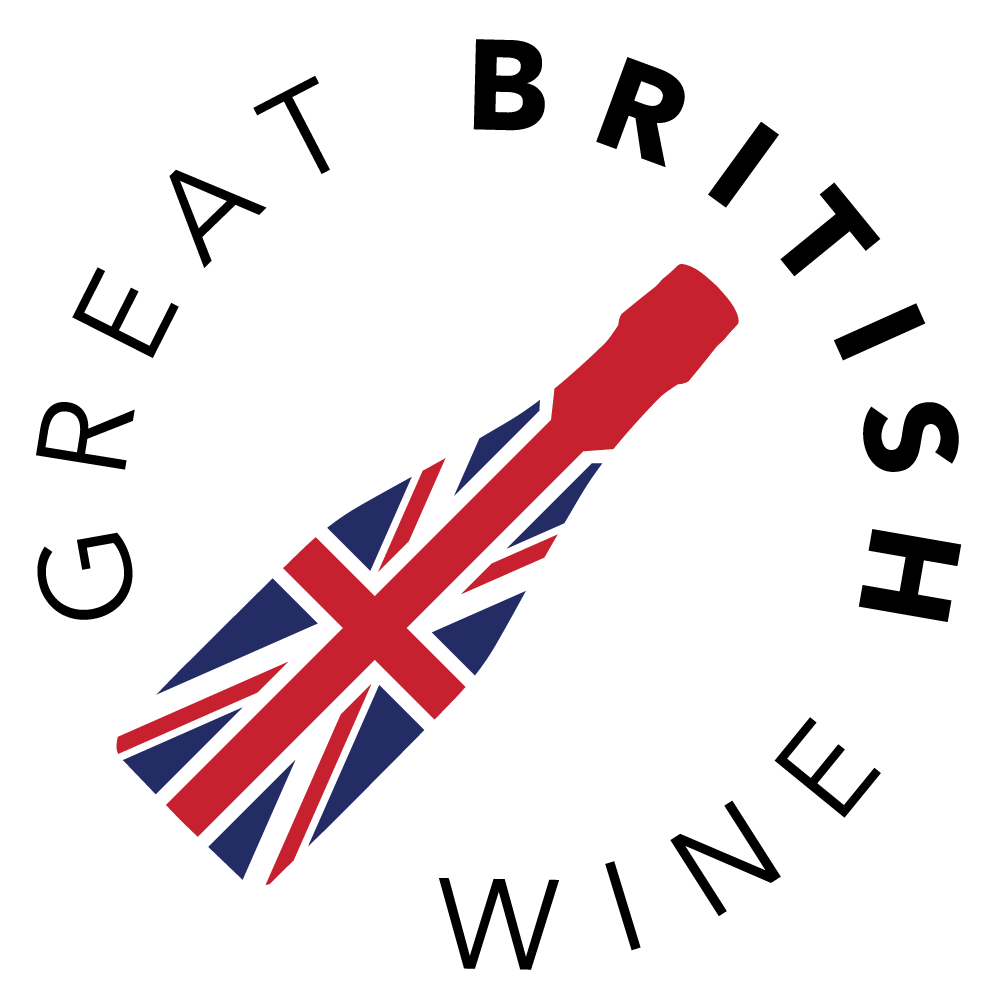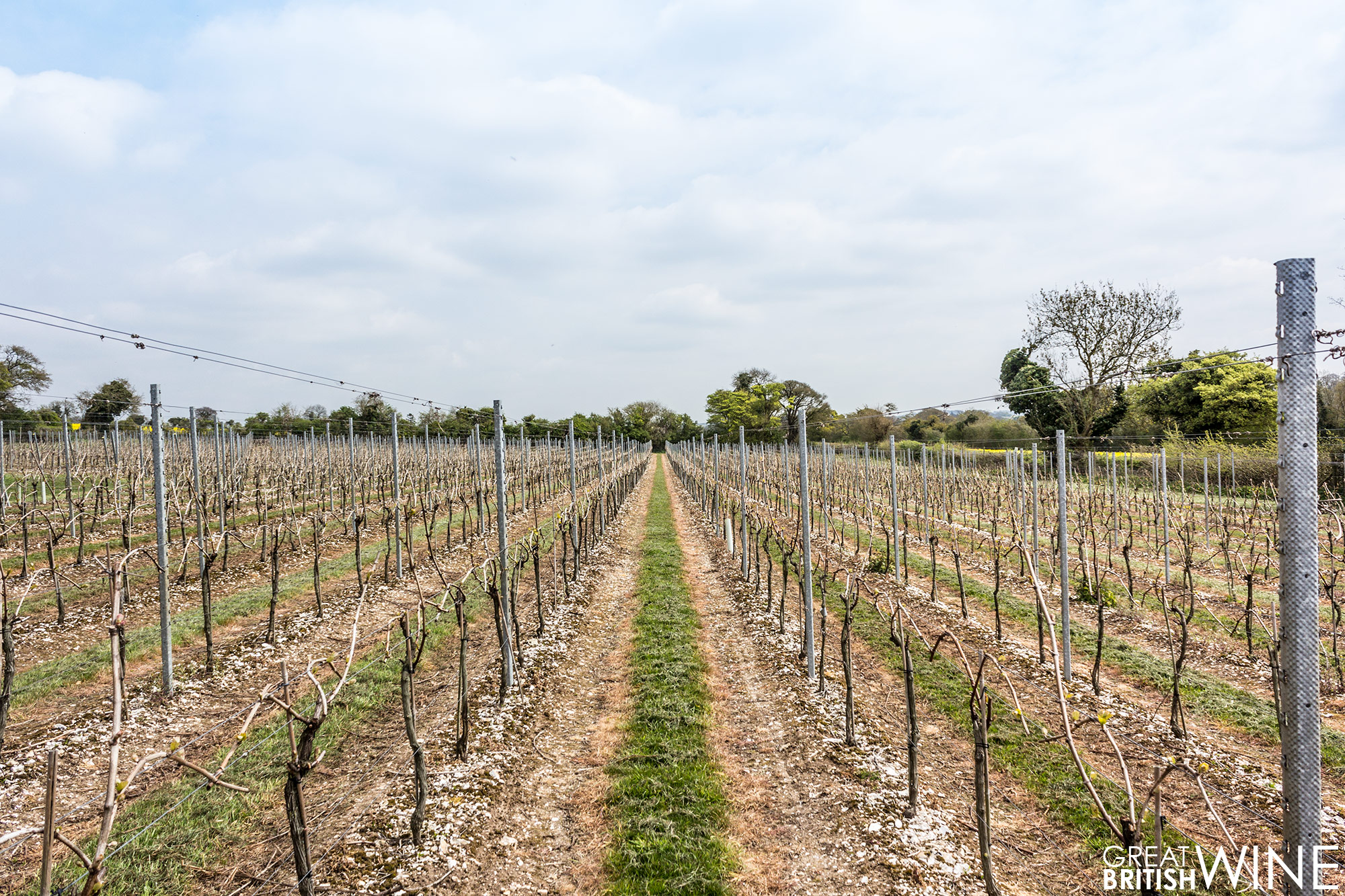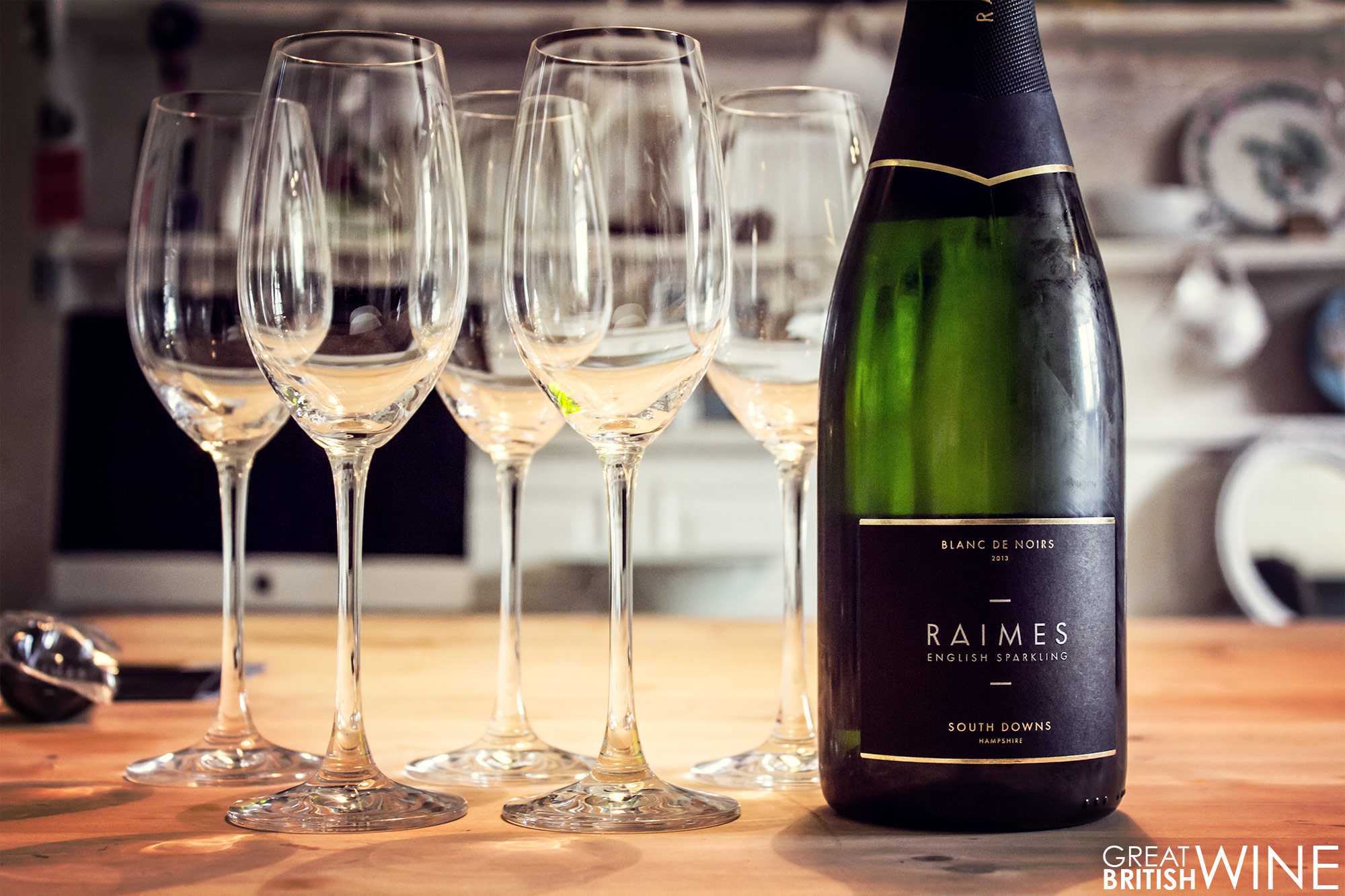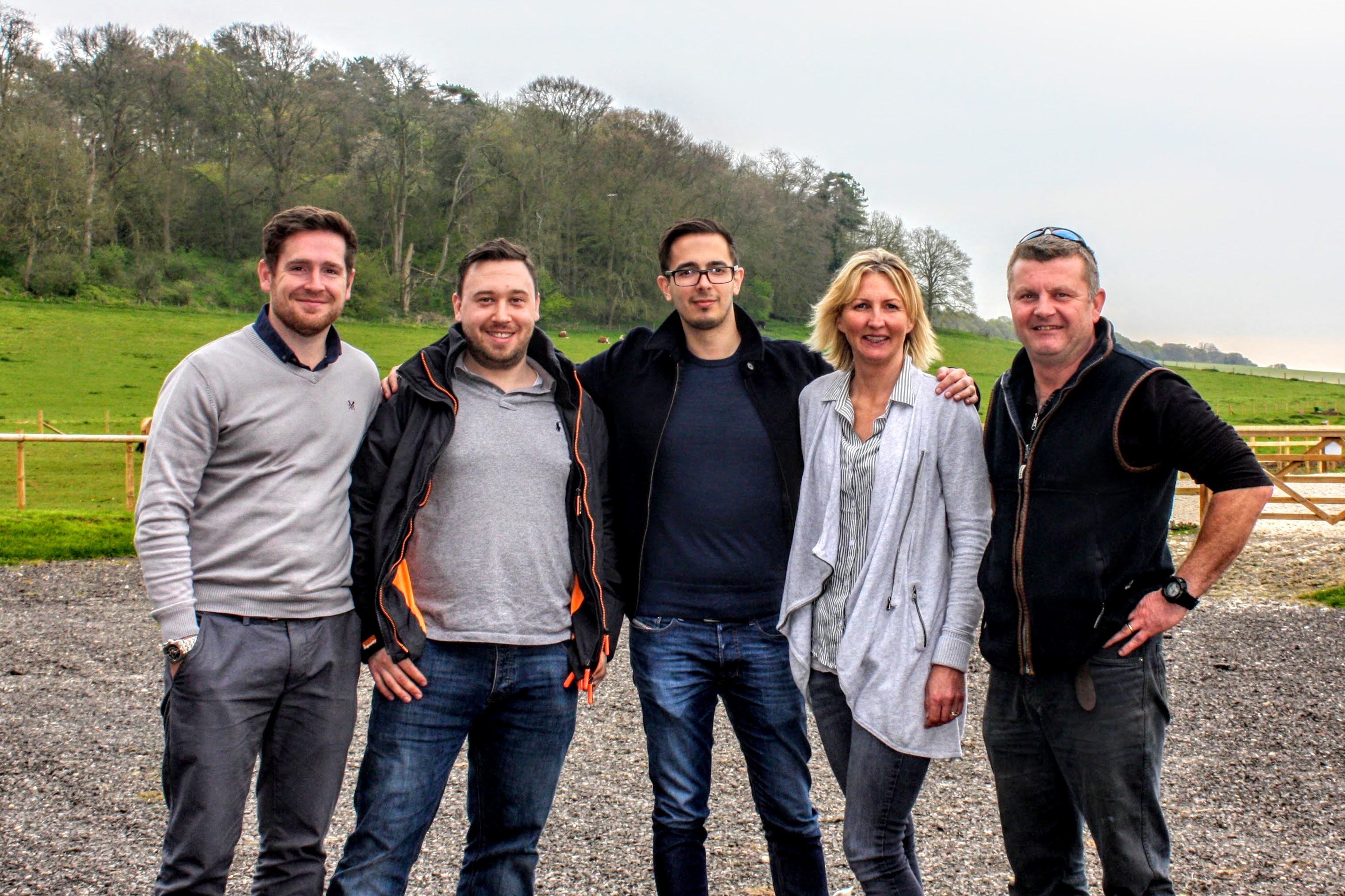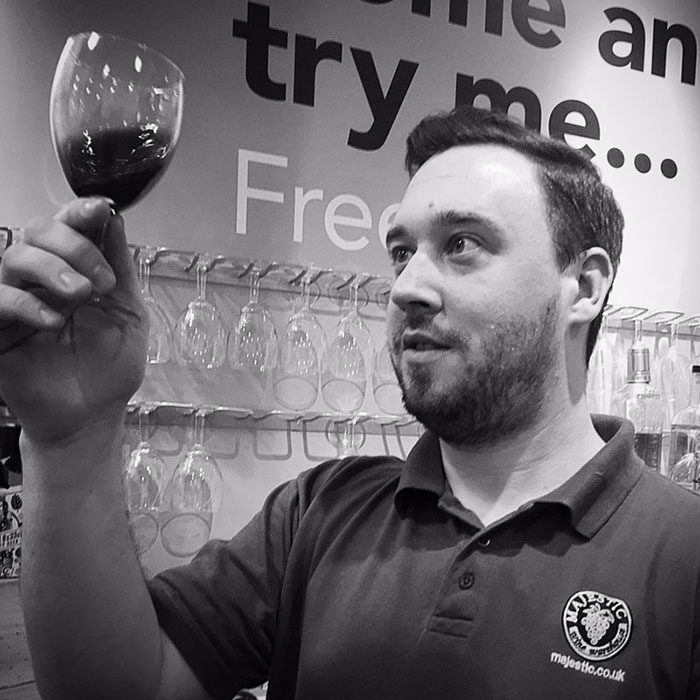I’m not entirely certain what I was expecting ahead of pulling up outside Grange Farm, but what I found was a producer like no other that I have encountered on my English Wine travels to date. We were warmly welcomed by Robert and Augusta (“Gussie”) and immediately led into their beautiful family home. Although it is always clear that vineyards are people’s businesses and livelihoods, this small gesture made it immediately apparent to me like never before that this was their life – it is on their doorstep and they live it and breathe it every day. There was no tasting room or elaborate visitor centre and we found ourselves chatting away in the Raimes's kitchen, forging an impromptu plan to tour the vineyard before having lunch with the family, alongside a bottle of their Blanc de Noirs of course. In these short exchanges I felt more intimately connected with the Raimes family and their wines than I could have imagined. We heard of plans to convert and old barn to accommodate larger numbers of visitors and I look forward to returning to see it completed, but I am so grateful for their hospitality, and this experience sat around the dining table learning about their history and business. It was wonderful.
Grange Farm is exactly that. A farm. A big, big farm, with 1,500 acres of arable farmland containing everything from wheat to rape, peas and spring barley that is exported to China for the brewing industry, and 400 acres of grassland. It was part of this grassland, with very thin topsoil and a profusion of chalk and flint beneath, that somehow piqued the attention of a couple of Champagne houses a few years back. Rather than selling up, Robert and Gussie decided that a vineyard might be an exciting venture and a lovely family business for their daughters to one day inherit. Now that they are well and truly operational they await to gauge their children's enthusiasm levels before deciding to expand, again highlighting the importance of family in their business. Whilst I understand all the hype surrounding recent mergers and acquisitions with Champagne houses, the Raimes’s [and other producers’] decision to go it alone is a much bigger win for English Wine in my eyes.
After extensive soil testing, the first vineyard was planted in April 2011. The first harvest in 2013 yielded just four tonnes, with enough Pinot Noir to fill a tank at the nearby Hattingley Valley winery. The yields were much better in 2014 and 2015, with the vines establishing quickly because of the composition of their soil. The second vintage is due for release in June this year and it will be interesting to see what difference a year makes, particularly given the yield variation. 2016 was a little less bountiful than expected due to late frosts affecting some of the vines, but, despite retaining similar acidity levels, the sugars in the grapes were higher. They therefore expect a slightly different style to come from this vintage, perhaps even throwing in a little malolactic fermentation for good measure.
Interestingly the first site we visited on our tour was the 2 hectare [5,000 vine] Arch Peak vineyard, which was composed entirely of Chardonnay – not much of that in a Blanc de Noirs! There was hope to release a Chardonnay dominant wine from the outset but the yields were not sufficient from the first vintage. Work is still being done to improve the Chardonnay output and we eagerly await the release of this new addition. The larger Harnam Hill vineyard is home to 8,000 vines, in equal quantities of Chardonnay, Pinot Noir and Pinot Meunier. As at Arch Peak, the soil was literally bursting with chalk, with boulders of the white stone protruding from the ground. No wonder then, that Champagne came knocking.
Robert explained that as a farmer, one of his greatest challenges was to overcome his intuition to extract maximum yields from the crop. That, and tackling the ever present threat of pests and frost. The former is more easily addressed, but I recall feeling perhaps as nervous as they were about the threat of frost attacking the vines. There are high-tech thermometers monitoring the vineyard sites, which alert if the temperature dips, but it almost seemed futile knowing. Gussie explained that with only two of them in the business, and children to look after during the night, there is no way for them to be able to get up even to light fires or bougies. Instead they can only prune a third “insurance” cane, which sticks up like a middle finger to the frost on each vine (hopefully above any air frost as it sits a little higher) and cross their fingers. I can’t help but wonder if the local village of Tichborne could help in some way, even in manpower for lighting fires to support their fabulous local asset should the worst happen. Indeed, a few weeks after we visited, the worst did happen and like many producers around England and France, the Raimeses must now fall back on the hope for a strong secondary bud burst.
 With a course at Plumpton College behind them, Robert and Gussie retain good influence over the winemaking process, with help from the team at Hattingley Valley and Kevin Sutherland, who they met during their course. I had never previously tasted the Raimes English Sparkling, but I knew two things already. Firstly, I love Blanc de Noirs. I think it has a wonderfully expressive character, picking up qualities from the skins that are not as prominent in Classic Cuvée blends, whilst maintaining unmatchable approachability through the abundance of red fruit flavours. A wine to capture the consumer’s palate and the expert’s attention. It's a bold stroke of genius to launch the brand with that style of wine in my opinion – one that I have often imagined taking myself if I were ever lucky enough to open a vineyard. Gussie explained the decision in much more simple terms. Like me, she loves Blanc de Noirs, so the decision was simple when the Chardonnay crop came up short.
With a course at Plumpton College behind them, Robert and Gussie retain good influence over the winemaking process, with help from the team at Hattingley Valley and Kevin Sutherland, who they met during their course. I had never previously tasted the Raimes English Sparkling, but I knew two things already. Firstly, I love Blanc de Noirs. I think it has a wonderfully expressive character, picking up qualities from the skins that are not as prominent in Classic Cuvée blends, whilst maintaining unmatchable approachability through the abundance of red fruit flavours. A wine to capture the consumer’s palate and the expert’s attention. It's a bold stroke of genius to launch the brand with that style of wine in my opinion – one that I have often imagined taking myself if I were ever lucky enough to open a vineyard. Gussie explained the decision in much more simple terms. Like me, she loves Blanc de Noirs, so the decision was simple when the Chardonnay crop came up short.
Secondly, I’d noticed the bottle on social media previously and I distinctly remember commenting, “Now that is a sexy bottle!”. There is nothing more to be said – it is beautiful, classy, thoughtful and appropriate. Gussie mentioned that she still sees herself more as a consumer rather than a producer and that perspective has surely made the difference. It’s something special, and it is certainly going to stand out on a shelf. John’s background is in packaging so I know he has his own slightly more technical reasons to be impressed with the product. However, as a former business owner who spent more hours than I care to recall agonising over the brand, it just makes my heart sing. Am I rambling over a label, foil and box? I think I might be…
So the wine had a lot to live up to. Whilst they grow many different crops, this is the first finished product that the Raimeses have taken to market. As their literature suggests, 'growing good grapes is in [their] soul'. Well I’d suggest that whilst the grapes might be good, the finished product is much more than that – it’s stunning in every way.
You can read John's full review of Raimes Blanc de Noirs 2013 here.
- 10 Acres
- No

